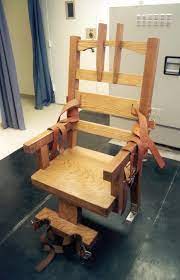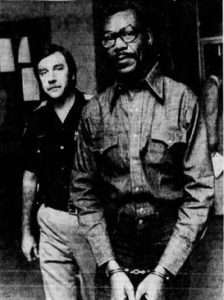Steven Thompson was executed by the State of Alabama for the murder of Robin Balarzs
According to court documents Steven Thompson would go to the home of Robin Balarzs, who was engaged to Thompson friend, the woman would be bound, sexually assaulted and dragged over three thousand feet behind a vehicle causing her death. Thompson would steal Robin Balarzs engagement ring before fleeing
Steven Thompson would be arrested, convicted and sentenced to death
Steven Thompson would be executed via the electric chair
Steven Thompson Case
The victim, Robin Balarzs, was engaged to marry David Roberts, a long-time friend of the defendant. On May 11, 1984, David Roberts was absent from Huntsville due to military service. Defendant (Steven Thompson) was aware of this absence.
On that day defendant (Steven Thompson) went to the home in Huntsville where Robin Balarz [sic] resided with her parents and her young child. The parents and the child were also out of town. Robin and her friend Cindy McElroy were at the residence. Defendant, Robin and Cindy engaged in normal conversation and defendant slept on a sofa while the girls retired to separate bedrooms.
Early on the morning of May 12th defendant left the residence. Cindy McElroy left at a later time. Cindy noticed no unusual behavior on the part of the defendant.
Defendant was absent without leave from the Navy and had need for money and goods which he could convert to cash. He planned to return to the Balarzs household to feloniously take money, gold or silver. In his planning defendant bought tape, bandages and other items with which to bind Robin.
On his arrival in the night of May 12, 1984, defendant entered the household on invitation of his friend and followed a course of conduct which can be described as beyond human comprehension in its vileness.
Defendant (Steven Thompson) bound and gagged Robin with a sock, bandage, rope and tape he had brought into her home with premeditated design. He cut her clothes from her person and beat her with his fists. He took a meager $1.00 bill from her purse (although at some point he also took her engagement ring). He stuffed a sock in her mouth. He cut her with a knife. He positioned his rental vehicle near the garage to facilitate her removal from the residence.
He made some effort to conceal the blood and physical tracings of his acts of brutality, placed Robin, still alive, in the vehicle, left the home and drove to secluded Green Mountain, a rugged area in Huntsville, Madison County. There, he proceeded to brutalize Robin Balarzs in a manner almost unspeakable in its nature, character and extent.
Defendant had sexual intercourse upon her, shoved a large knife into what he thought to be her vagina, bound her breasts with a rope, tied her to the vehicle and dragged her through mud, over rocks and on pavement for a distance in excess of 3000 feet. At some point he pulled and shaved her hair with a razor especially purchased. He stabbed her about her breasts and cut her with the knife.
Robin Balarzs died during her ordeal. Some of the atrocities were against her corpse.
The defendant realized that left in the Balarzs home were items which would reveal his crimes, if not his identity. He returned to the residence for the purpose of securing these items, leaving Robin Balarzs on Green Mountain.
While defendant was attempting to re-enter the Balarzs home David Roberts returned. Seeing David drive up to the residence, defendant evaded detection and drove away to spend the rest of the night in his vehicle.
David Roberts entered the home and noticed signs of the defendant’s depravity. He contacted neighbors and friends of Robin, called hospitals and tried to locate her. Finally, David Roberts called Huntsville Police Department and investigation into the case began. David recalled seeing defendant’s vehicle parked near the residence and an alert was dispatched on defendant by radio. At that time it was in connection with a missing person report.
In the early morning of May 13, 1984, two uniformed officers saw defendant in his vehicle and stopped him. Defendant’s vehicle was dirty and damaged and defendant had what appeared to be blood and mud about his person. Defendant was properly advised of his constitutional rights, taken into custody, removed to police headquarters and questioned.
After first denying knowledge of the fate of Robin Balarzs, defendant made statements admitting his activities and led an officer to the scene atop Green Mountain. Robin’s battered body was found. Her parents and David Roberts were advised that she was dead.
https://casetext.com/case/thompson-v-state-1646











